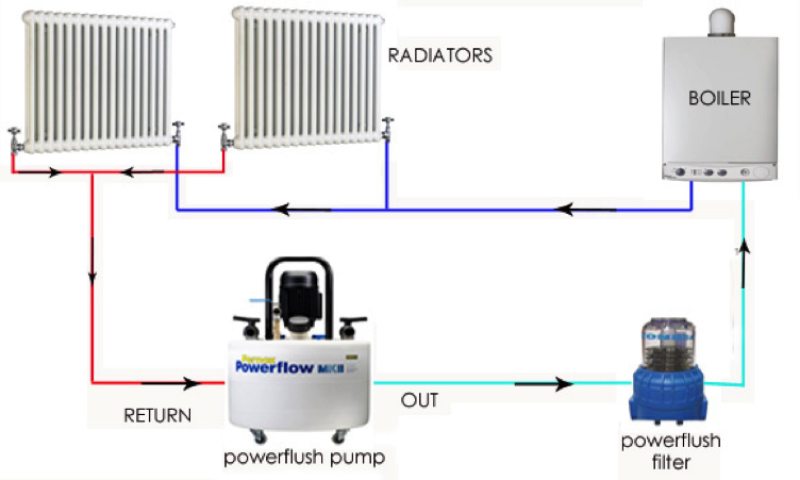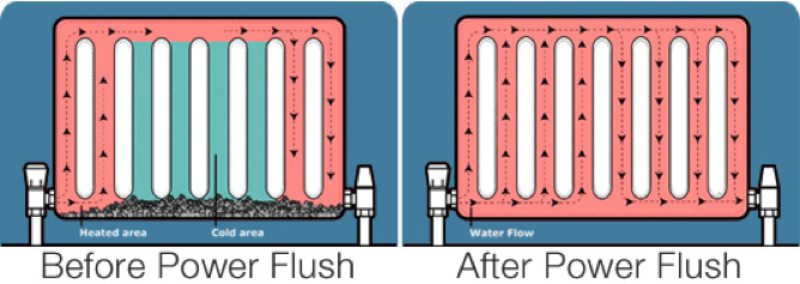Power flushing
Central Heating Leak Prevention
Do you know if your heating is working efficiently? Could you be wasting money on your heating bills by running a sludged up central heating system and putting your boiler at risk?
If your system is old or even if it has been installed relatively recently, but without enough of the necessary rust inhibitors, dirt and sludge can build up in radiators, pipes and even your boiler. Over time corrosion within the pipes and radiators produces black sludge which causes blockages in pipes and a build up in radiators. This means your boiler has to work harder to heat your home and this means bigger fuel bills for you. Magnetic cleaners can help prevent the build-up but cannot restore your system to being efficient once the build-up has started.
How do you know if your central heating system needs a power flush?
Is the water dirty when you bleed your radiators? This suggests a build-up of the sludge caused by corrosion.
Does your boiler make more noise recently, or has it started cutting out? This could be due to the suspended solids starting to accumulate. Over time this may block pipes and cause damage to the boiler, meaning costly repairs.
Do your radiators have cold spots? Cold at the bottom of the radiators could be a sign of sludge build up which interrupts the flow of hot water round your system. This means your system is running inefficiently and is costing you money. Cold at the top of your radiators can be caused by a build up of hydrogen gas which is created by the rusting process inside your heating system. Frequent bleeding of the radiators is a sign this gas may be building up.
Do you have a reduced hot water temperature or does your system take a long time to heat up? Sludge and lime scale will coat the inside of pipes and heat exchangers making your system less efficient. Not only that, over time the internal corrosion of radiators and boilers can lead to leaks on the system and costly repairs.
Your only answer is a central heating power flush. The Leak Team are trained by Fernox, who are world leaders in water treatment products and equipment. Carrying out a central heating power flush requires a cleaner to be added to the central heating water 5 to 9 days before it is flushed. The cleaner helps loosen deposits which have built up ensuring your system is left clean following the flush.
We use a flush to clean out each radiator and all pipe work. We achieve this by closing all radiators except the one to be flushed. The water is run through the radiator in both directions until it runs clear. Once the water is clear to Fernox standards, we clean the next radiator. Once all radiators and pipework have been power flushed the rust inhibitor can be added and tested to ensure correct levels which means the system is protected for another 12 months.
The time it takes to flush a system depends on the number of radiator panels in the property, the size of pipes and how much dirt and sludge there is. The power flush can usually be completed in less than a day in most average sized domestic properties.
Our methods include:






